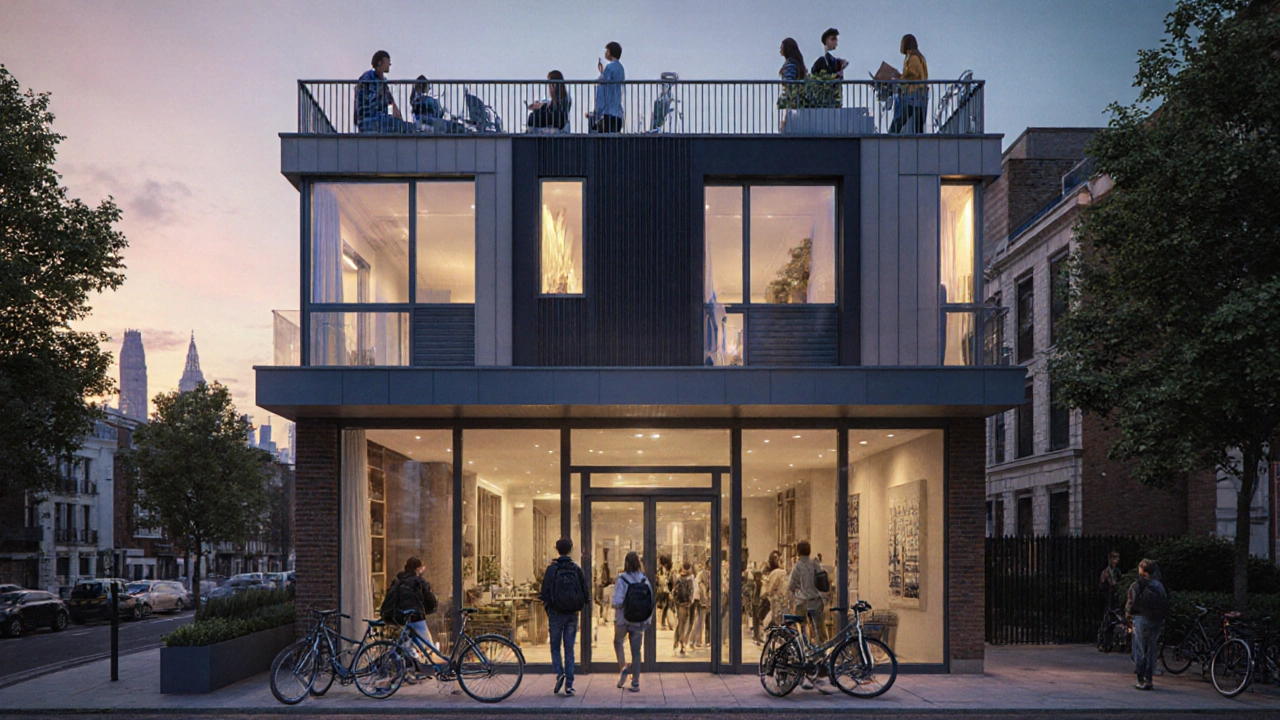
London’s student accommodation market isn’t just about dorm rooms and shared kitchens. It’s one of the most reliable property investment sectors in the UK, with demand consistently outpacing supply - even during economic slowdowns. While other parts of the rental market wobble with interest rate swings, student housing keeps ticking. Why? Because universities don’t close. Students still need a place to live. And in London, that need is massive.
Why London Still Wins for Student Housing
London has over 400,000 university students across 40+ institutions. That’s more than any other city in the UK. UCL, King’s College London, Imperial, LSE, and Queen Mary alone each house 30,000+ students. Most of them don’t live at home. Over 75% of international students and nearly 60% of domestic undergrads live off-campus. And here’s the kicker: less than 30% of the demand is met by purpose-built student accommodation (PBSA). The rest? Crowded flats, illegal conversions, and overpriced private rentals.
This gap isn’t shrinking. International enrollment is rising. In 2024, UK universities welcomed over 700,000 international students - up 18% since 2020. And London remains the top destination. That means more people needing a bed, a desk, and a shower. Investors who understand this aren’t betting on trends. They’re betting on physics - you can’t build more students, but you can build more rooms.
What Investors Actually Earn
Let’s get real about returns. A typical one-bedroom PBSA unit in Zone 2 or 3 - think Peckham, Stratford, or Croydon - costs between £300,000 and £450,000. Annual gross rent? Between £18,000 and £24,000. That’s a yield of 5.5% to 7%. Compare that to a standard London flat, which might yield 3.5% after management fees and voids. Student properties rarely sit empty. Contracts run from September to June. Vacancy? Usually just a few weeks in July and August.
Management is simpler too. Most PBSA operators handle everything: marketing, rent collection, maintenance, cleaning. You don’t need to deal with noisy tenants or midnight calls about broken boilers. You just get a direct deposit. Some firms even guarantee rent for the full academic year, regardless of whether the unit is occupied. That’s a big deal when you’re counting on cash flow.
And don’t forget the tax advantage. Student housing qualifies for commercial property rates, not residential. That means lower stamp duty if you’re buying through a limited company. Plus, you can offset mortgage interest, repairs, and management fees against rental income. HMRC treats it like a business - not a hobby.

Where to Buy and Where to Avoid
Not all areas are equal. The best spots are within a 20-minute walk or one tube stop from a major university. Think:
- Zone 2: Peckham, Brixton, Clapham, Hackney - close to UCL, King’s, LSE, and Goldsmiths. High demand, steady prices.
- Zone 3: Stratford, Lewisham, Croydon - cheaper entry points, growing student populations, new transport links like the Elizabeth Line.
- University towns near London: Ealing, Hounslow, and Enfield are seeing spikes as students look for affordability without long commutes.
Avoid areas with poor transport, high crime rates, or no university nearby. A student won’t walk 40 minutes to campus just to save £200 a month. And don’t chase cheap buys in post-industrial zones with no future development. Student demand is smart demand. It follows infrastructure, safety, and convenience.
The Risks - And How to Avoid Them
Yes, it’s a solid market. But it’s not risk-free.
Overbuilding is the biggest threat. In 2023, over 15,000 new student beds were added in London. That’s more than in any year since 2018. Some areas, especially near smaller universities, are now seeing oversupply. Check occupancy rates before buying. Ask for audited data from the operator. If a development is 85% full after two years, you’re safe. If it’s below 75%, walk away.
Regulation is tightening. New rules in 2025 require all student properties to meet HMO (House in Multiple Occupation) licensing standards. If you’re buying a converted flat, make sure it’s already licensed. Otherwise, you’ll face fines up to £30,000 and months of delays.
Student numbers could dip if visa rules change or fees rise again. But even in 2020, during the pandemic, London’s student population only fell by 8%. Most returned within 12 months. This isn’t a fad. It’s a structural need.

How to Get Started
You don’t need millions. Many investors start with a £50,000 deposit on a £300,000 unit. Buy through a specialist student property fund or a reputable developer like Unite Students, iQ, or Student Roost. They handle the build, management, and exit strategy.
Or, buy off-plan. Developers often offer guaranteed rent for the first two years. Lock in your yield before the market adjusts. Just make sure the developer has a track record. Check past projects. Ask for references.
Don’t try to manage it yourself unless you’re in London full-time. Use a professional operator. Their fees (usually 15-20% of rent) are worth every penny. You’ll save time, avoid legal traps, and keep your tenants happy.
What’s Next? The Outlook to 2027
London’s student housing market will keep growing. The government’s target of 500,000 international students by 2030 is already on track. More students mean more demand. More demand means more investment. And with UK housing supply still stuck at a 30-year low, student accommodation remains one of the few areas where supply can’t catch up.
Prices in prime student zones are rising 4-6% annually - faster than the wider London market. And rental growth? Around 3-5% per year, even after inflation. That’s not speculation. That’s data from the UK Student Accommodation Report 2025.
If you’re looking for a property investment that doesn’t rely on boom-and-bust cycles, that’s resilient during recessions, and that’s backed by real, unchanging human needs - student housing in London isn’t just an option. It’s one of the clearest plays left in the UK market.
Is student accommodation in London a good investment in 2025?
Yes, it remains one of the most stable property investments in the UK. With over 400,000 students in London and a chronic shortage of purpose-built housing, demand consistently exceeds supply. Rental yields average 5.5% to 7%, often higher than standard residential rentals. Many operators offer rent guarantees, and international student numbers continue to rise.
How much money do I need to invest in student accommodation in London?
You can start with as little as £50,000 for a deposit on a £300,000 unit. A typical one-bedroom student flat in Zone 2 or 3 costs between £300,000 and £450,000. Many investors use limited companies to benefit from lower stamp duty and tax deductions on mortgage interest and management costs.
What’s the average rental yield for student property in London?
Average gross yields range from 5.5% to 7%, depending on location and property type. Units near top universities in Zone 2 (like Peckham or Brixton) often hit 6.5% or higher. This is significantly better than standard London rentals, which average around 3.5% after fees and voids.
Are student housing investments affected by interest rate changes?
Less than other property types. Student demand is driven by enrollment numbers, not affordability. Even when rents rise, students still need housing. Many operators lock in long-term leases and offer rent guarantees, insulating investors from short-term market swings. While mortgage costs matter, the consistent occupancy reduces overall risk.
Should I buy a new build or an existing property?
New builds often come with rent guarantees for the first 2 years and are built to modern HMO standards, avoiding costly retrofits. Existing properties may be cheaper upfront but often require licensing, renovations, and compliance upgrades - which can eat into profits. For beginners, new builds with operator partnerships are the safer route.
What are the biggest risks in student accommodation investment?
The biggest risks are oversupply in certain areas, regulatory changes (like HMO licensing), and poor location. Avoid areas without strong transport links or near underperforming universities. Always check occupancy rates - anything below 75% after two years is a red flag. Also, avoid buying without a professional management partner unless you’re local and experienced.